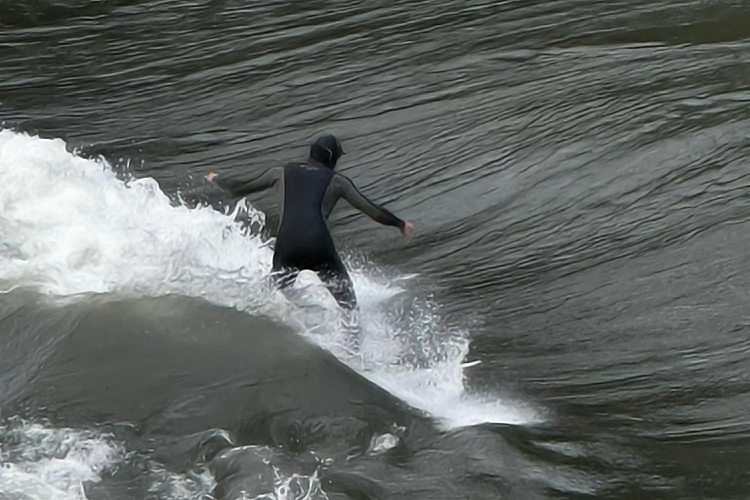Unlike Central European countries, Portugal does not have many river waves. But as the saying goes, "Surf is where you find it."
Portugal has around 300 rivers and tributaries. Most flow into the Atlantic Ocean, where surfing is already a familiar and often overpopulated activity.
Therefore, surf tourism has focused on coastal communities along continental Portugal, the Azores, and Madeira.
However, river surfing has increasingly gained new enthusiasts and participants worldwide, and the exploratory missions to discover new rideable spots have intensified.
One of the oldest and most famous river waves is the Eisbach in Munich, Germany.
The river surfing break has been ridden non-stop since 1972 in the heart of the Bavarian capital.
It is now one of the city's most popular tourist attractions.
The stationary wave flows nearly all year round and gets surfers queuing for their turn, night and day.
According to SurferToday's world river surfing map, Portugal only had two stationary waves - one in Foz do Arelho, a beach resort 30 kilometers south of Nazaré, and another in São Lourenço Beach in Ericeira.
However, they require human intervention for the spots to come to life and be ridden, meaning that surfers must dig a channel through the sand to connect the river flow and the ocean.
But until now, Portuguese rivers were yet to deliver a natural standing river wave, similar to the Munich counterpart.
A Medieval Surfing Experience
A new chapter has been written, though.
The westernmost European nation unveiled its first known, natural, surfable freshwater wave.
The first Portuguese river surf spot can be found near the Medieval Bridge in Barcelos, a town in the northern Minho province.
A surfer has been spotted riding the Cávado River over what appears to be a 100 percent natural riverbed, i.e., a non-modified stream bottom.
The surfer got in the water when river streams were particularly intense, thanks to the high precipitation rates of the Portuguese winter season (December-March).
The footage sent to "O Minho" regional newspaper shows a surfer getting into the water via the riverside, paddling against the current and through the bridge's arches before reaching the surf zone.
The Barcelos Medieval Bridge was built somewhere between 1325 and 1330 and classified as a national monument in 1910.
It is 100 meters long, 18 meters high, and 15 meters wide, including a balcony for pedestrian passage.
The bridge features five uneven arches with cutwaters in the pillars.
The Cávado River has its source in Serra do Larouco at 4,990 feet (1,520 meters) above sea level.
It runs 84 miles (135 kilometers) from Fonte da Pipa to its mouth into the Atlantic Ocean in Esposende.
Several passersby shot the historical moment, and the videos were an instant hit on social media.
The comments were various, ranging from the ignorant "He should be working" and "He's putting other people at risk" to the more positive "Let him have fun" and "This could be a good thing for Barcelos like Munich."
River surfing can change towns and villages, and Eisbach is not the sole example.
The Bend Whitewater Park in Oregon, the Pororoca in Brazil, the Severn Bore in England, the Seven Ghosts in Indonesia, and the Boise Whitewater Park in Idaho are only a few examples of places where river waves are boosting tourism activities and the local economy.
